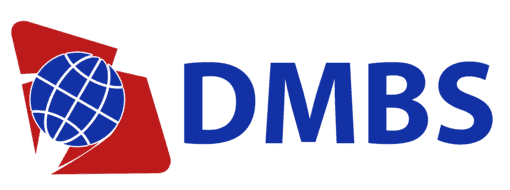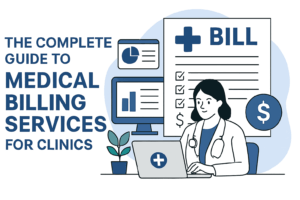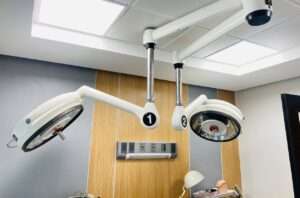One of the most important aspects of revenue cycle management (RCM) in the healthcare industry is Digital Medical Billing Solutions’ (DMBS) accounts receivable (AR) follow-up procedure. By ensuring that healthcare providers are paid promptly and accurately for the services they deliver, this procedure reduces the time and effort needed to chase down unpaid balances. DMBS’s AR follow-up procedure is carefully planned to maximize cash flow, lower the denial rate, and uphold proper 1financial operations for medical practices.
1. Initial Claim Submission and Tracking
The submission of claims to insurance companies or other payers starts the AR follow-up procedure. By using its integrated billing system, DMBS guarantees that claims are appropriately created and electronically submitted. Errors at this early stage of the submission process could result in claim denials or payment delays, so accuracy is crucial. Following submission, claims are continuously monitored to track their advancement through the payer’s assessment process.
2. Identification of Outstanding Claims
The submission of claims to insurance companies or other payers starts the AR follow-up procedure. By using its integrated billing system, DMBS guarantees that claims are appropriately created and electronically submitted. Errors at this early stage of the submission process could result in claim denials or payment delays, so accuracy is crucial. Following submission, claims are continuously monitored to track their advancement through the payer’s assessment process. Claims are often grouped into aging buckets (30-60 days, 60-90 days, 90+ days) to facilitate targeted follow-up actions.
3. Analysis and Prioritization
The DMBS team evaluates each unresolved claim to ascertain the best course of action prior to beginning follow-up. Examining the claim facts, the payer’s policies, the cause of the postponement or non-payment, and any prior correspondence or supporting evidence are all part of this examination. Prioritizing claims that involve significant monetary values or those nearing timely filing restrictions helps to guarantee that they are handled as soon as possible.
4. Claim Follow-up and Resolution
The DMBS AR follow-up staff proactively pursues the resolution of unresolved claims. This means getting in touch directly with payers to find out the status of the claim via phone calls, emails, or web portals. The group confirms whether the claim was received, whether further documentation is needed, and whether any discrepancies need to be resolved.
When a claim is rejected, the team looks into the reason why, which may be anything from incomplete data to improper coding to problems with patient eligibility. The team works to fix the mistakes and resubmit the claim after determining the cause. This could occasionally imply re-coding the claim, getting more information from the patient or the healthcare provider, or supplying more supporting documents.
5. Appeals and Resubmission
If a claim has been denied and the DMBS team believes it was unreasonable, they will file an appeal. This method involves composing a detailed appeal letter and attaching all required documents to support the claim. The appeal is then submitted to the payer, and the team will continue to follow up until a resolution is obtained.
Before re-submitting a claim, the team confirms that all errors have been addressed. This step is critical to avoiding additional delays and ensuring that the claim is processed appropriately when resubmitted. DMBS’s awareness of payer rules and coding criteria considerably improves the possibility of successful re-submissions.
6. Patient Follow-up and Collections
Healthcare providers receive comprehensive reporting on AR follow-up efforts from DMBS. Metrics including the overall amount owed, the age of claims, the success percentage of appeals, and the typical time to payment are included in these reports. These reports assist providers in understanding their financial situation and discovering possible adverse trends.
7. Reporting and Continuous Improvement
Healthcare providers receive comprehensive reporting on AR follow-up efforts from DMBS. Metrics including the overall amount owed, the age of claims, the success percentage of appeals, and the typical time to payment are included in these reports. These reports assist providers in understanding their financial situation and discovering possible adverse trends.
DMBS consistently evaluates and enhances its AR follow-up procedures to boost productivity and efficacy. DMBS can put strategies in place to stop future problems, such strengthening coding accuracy, upgrading documentation standards, or negotiating better terms with payers, by identifying patterns in claim denials and delays.
Conclusion
DMBS’ AR follow-up procedure is a thorough, systematic way to managing outstanding claims and guaranteeing prompt payment. By combining innovative technology, talented individuals, and targeted follow-up methods, DMBS increases revenue for healthcare providers while reducing the administrative load of AR administration. This comprehensive strategy not only improves financial performance, but also contributes to the general sustainability of healthcare operations.










